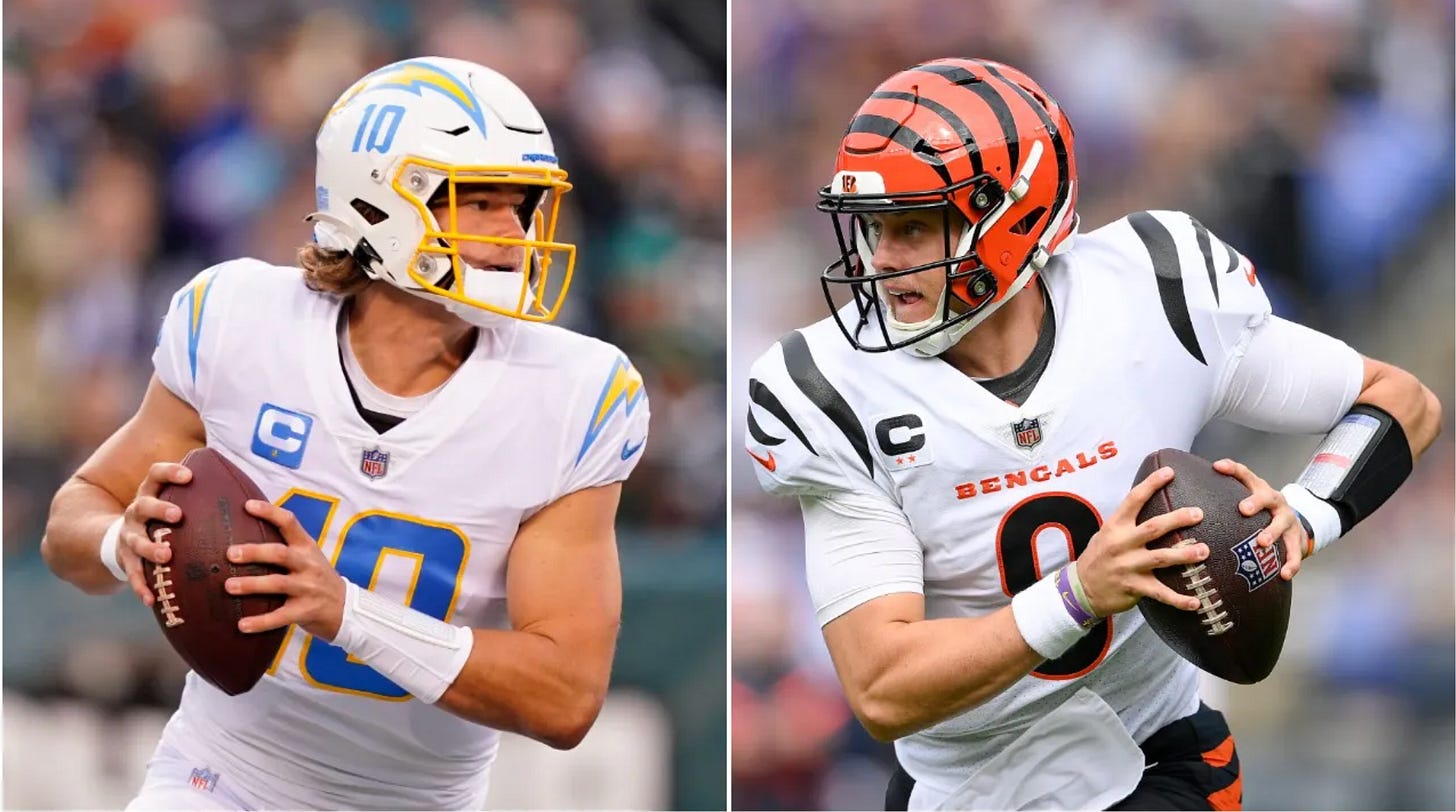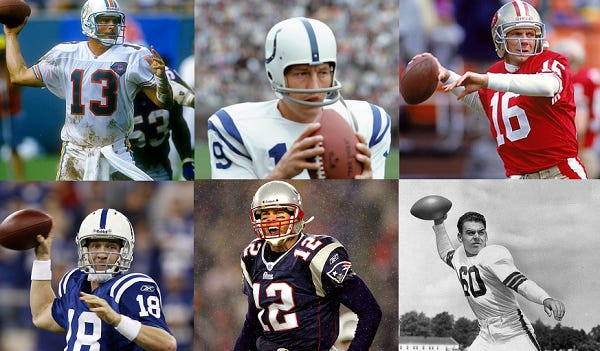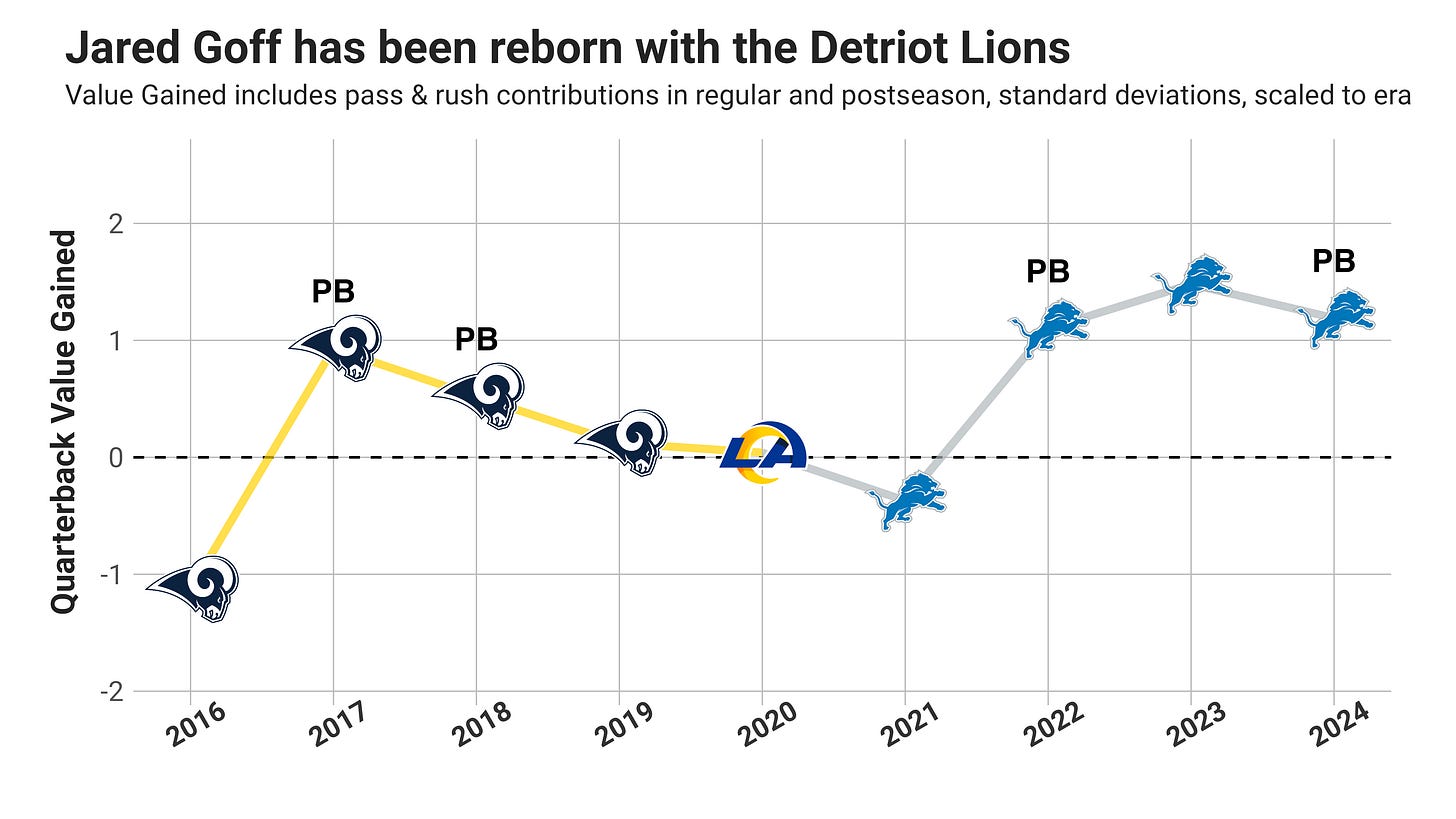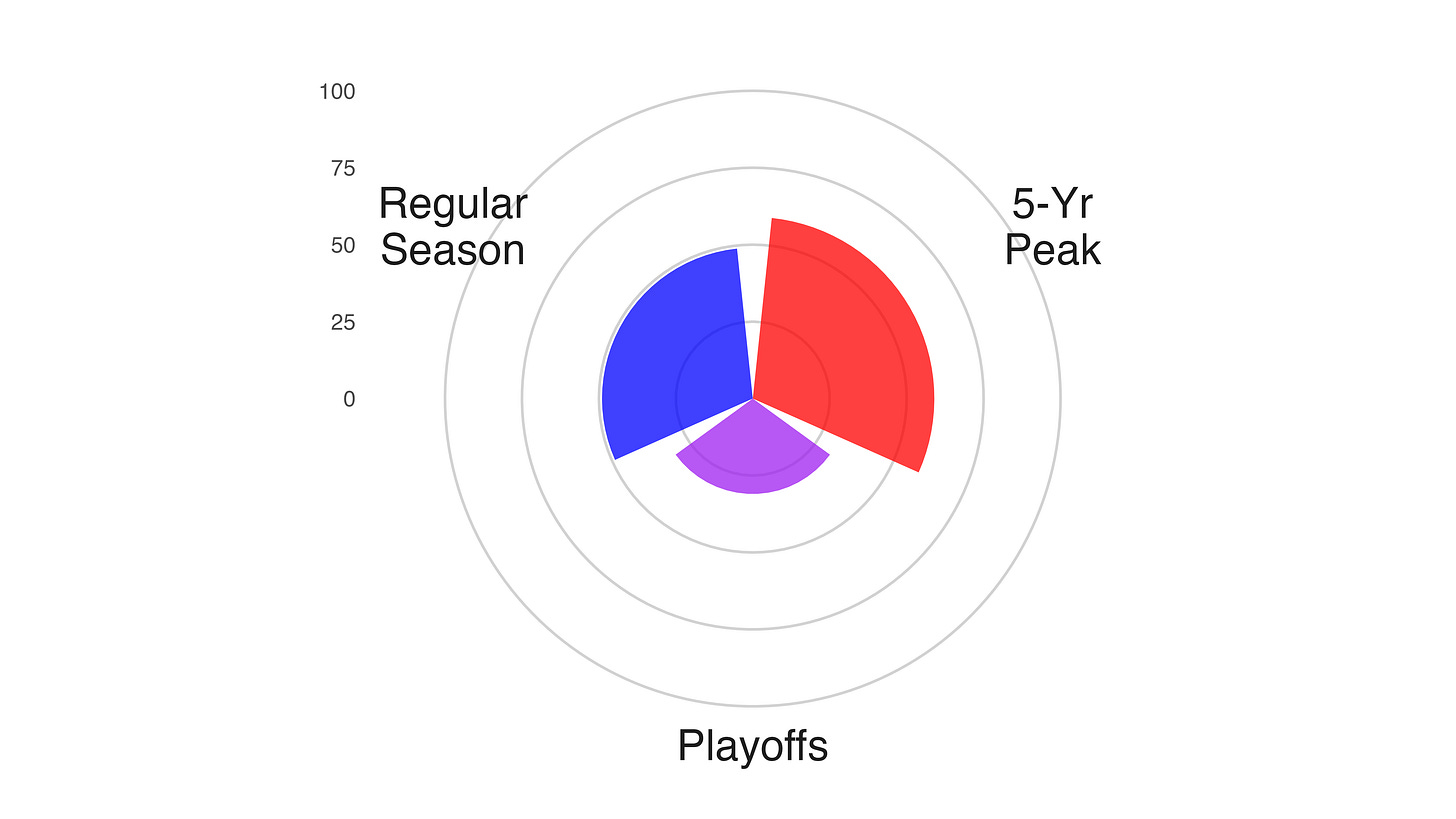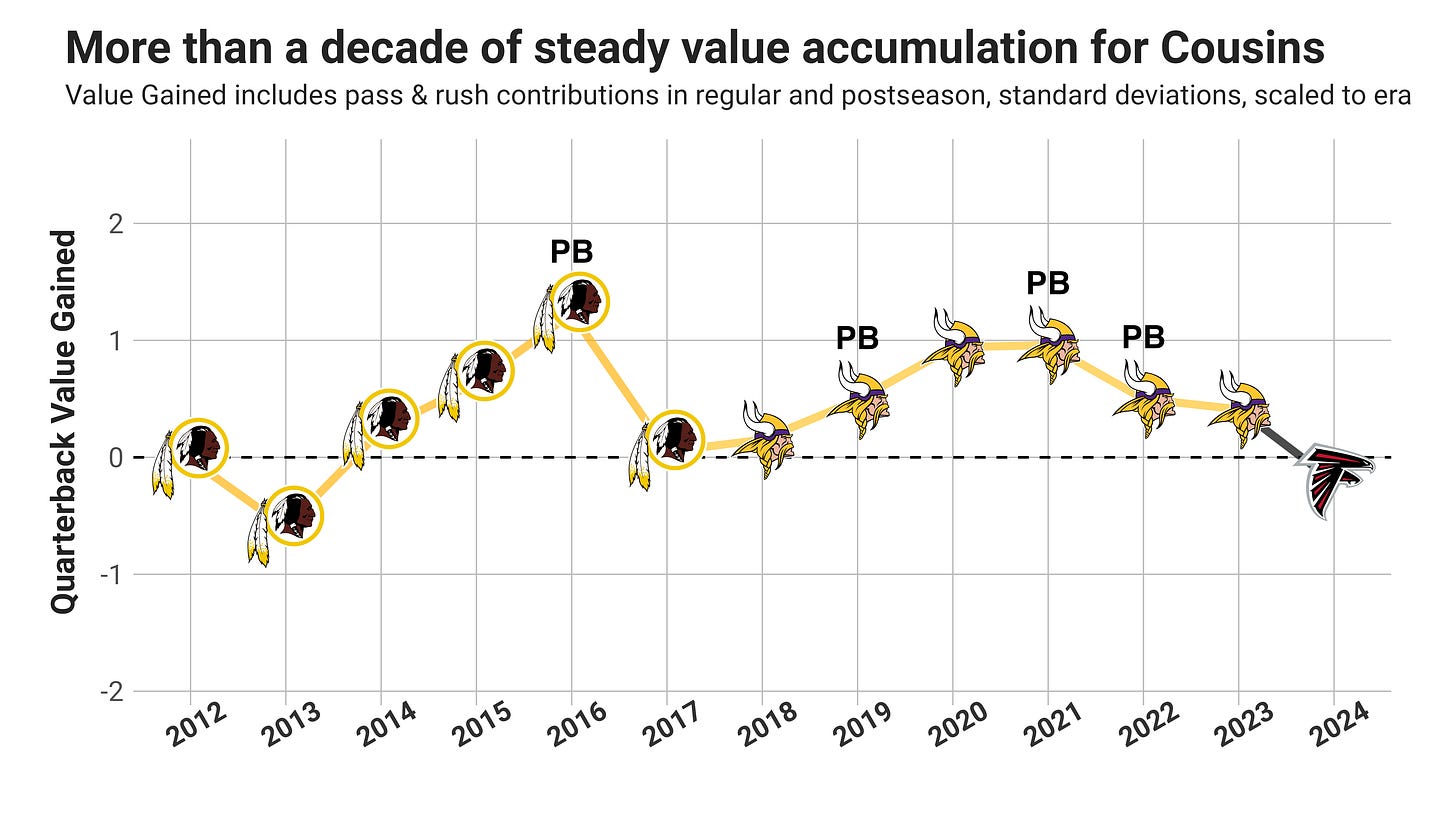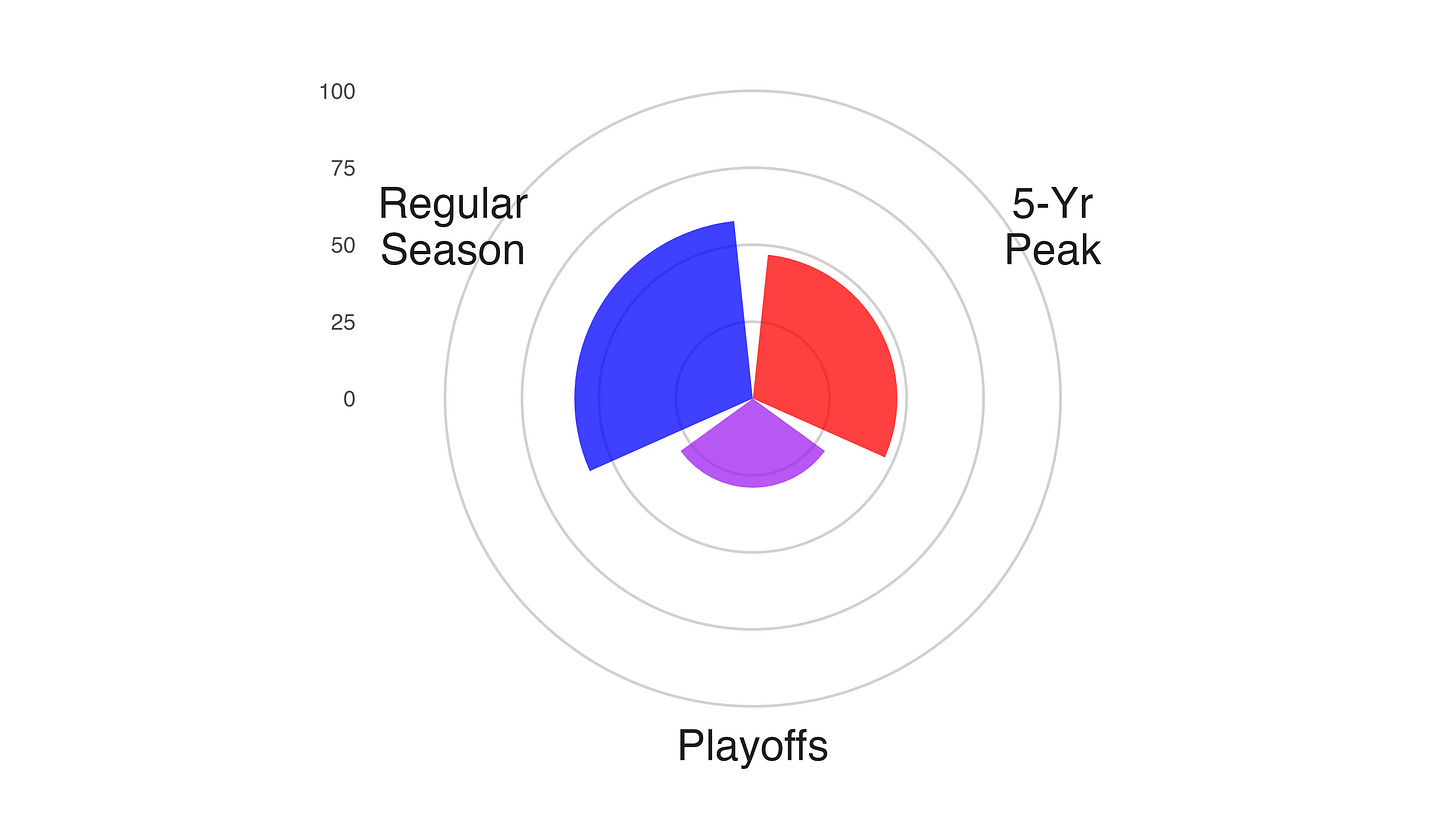Updating the QB GOAT Series, Younger Stars On the Radar
Two years have passed since I introduced an analytical methodology for valuing the top-50 quarterbacks in NFL (plus AFL/AACC) history. Now it's time for an update
I dropped the QB GOAT series two offseasons ago, with mostly expected results, though it highlighted many quarterbacks that could be over/underrated by historical reputations. The key to the analysis was having an explicit, open and systematic way to value quarterbacks throughout history, while adjusting for era to level the competitive playing field for quarterbacks spanning the “modern” professional football era: from integration in 1947 to today.
The description of the methodology below hasn’t changed from the introductory post I made two years back, but the rankings have fluctuated with two more years of data and value accumulation for contemporary quarterbacks.
Some numbers around the changes in the rankings when adding two more seasons of NFL value:
Three current quarterbacks enter the top-50: Dak Prescott, Josh Allen and Lamar Jackson
Correspondingly, three drop out: Jim Everett, Mark Rypien and John Hadl.
A younger quarterback with, perhaps, the best start to a career in NFl history enters the top-101
A slight shake-up in the top-5, with an all-time great adding enough value last season to make up for a marginal gap2
Below the methodology, I’ll highlight a few current quarterbacks that don’t quite make the top-50, contextualizing their prospects, if any, to eventually eventually get there. Go back to the post from two years ago if you want to see why Daunte Culpepper and Steve McNair barely missed out on the top-50, and why Eli Manning isn’t really close.
METHODOLOGY
I don’t want to get too bogged down in the details, but it’s critical when ranking anything, especially when there will be clear contention, to be as explicit as reasonably possible. The foundation of the analysis is efficiency over league-average adjusted for era.
For passing, I use adjusted net yards per attempt (ANY/A), as its explicit formula accounts for the impacts of per-pass yardage, touchdowns, interception and sacks. It’s not as accurate as expected points added to the precise play-level effect on scoring, but we have the components going back much further for ANY/A, which is necessary to compare recent results from those decades past.
I also weigh rushing efficiency in the equation, in a similar formula to ANY/A, but using yards per carry, with the same 20-yard bonus for touchdowns and 45-yard deduction for turnovers (fumbles).
The passing and rushing efficiency number for each quarterback season is measured against the five-year rolling averages of that era, and then translated into a Z-score, or standard deviations over/under the league average.
I weigh volume by applying a multiple to each standard deviation gained/lost that is the ratio of quarterback passes/rushes that season versus the per-team league average. The league average number is discounted by 5% to account for the fact that starting quarterbacks often miss some time. In other words, if a quarterback produces ANY/A a standard deviation higher than the league in a year, but passes a a volume 20% higher than average, his seasonal standard deviation gained will be 1.2.
The playoff value contributions are calculated in the same manner, but the games are more highly weighted due to the relative importance of results on the ultimate goal, winning a championship. A full playoff run, which varies in length by NFL era, can contribute up to a half-season’s worth of value for a quarterback, a significant driver of overall QB GOAT results. I understand that team results often determine if a team makes it to the playoffs, or has a longer run to accumulate quarterback stats. This is one of many instances where simplicity must be weighed against isolating quarterback contribution, and I chose to go with the former.
The last element of the QB GOAT value calculation is an added measure for peak play, which I chose as the top-5 regular seasons of each quarterback’s career. While a steady, good career is important, quarterbacks who can provide a handful of truly elite seasons have the biggest impact of the potential for team success and a long playoff run.
The career, peak and playoff standard deviations gained each roughly account for a third of the QB GOAT calculation. Thanks to the generous contributions of data from other, I have sack and sack-yard numbers for many quarterback seasons before it’s available on public data sources, and used career averages or league averages for those seasons where those numbers remain missing.
Now to the current quarterbacks closing in on the top-50
No. 51: JARED GOFF
Regular: 51st, Peak: 42nd, Playoffs: 69th
The thing about this analysis is that it’s very focused on outperformance, meaning great seasons, even just a few, can have an outsized effect on career value rankings. You combine that relative importance of high-value seasons with the smaller differences in career value in the 50-100 overall range - the gaps get significantly bigger closer to the top (and bottom), see the normal distribution - and we find that Jared Goff can jump more than 20 spots in just two years.
Combining regular season and playoff value added, Goff's last three seasons rank as his top-3 in his career, which shifts his “peak” much higher, also using a couple great seasons with the Los Angeles Rams to make up his top-5 seasons in total.
What Goff lacks a bit compared to others ranked higher is the combination of elite efficiency with high volume. Goff ranked fourth, seventh and second, respectively, in adjusted net-yards per attempt (ANY/A) the last three seasons, but finished sixth, second and 10th in pass attempts, also lacking meaningful contributions rushing the ball.
Goff has also struggled a bit in the playoffs, at least relative to his recent blazing efficiency in the regular season. Goff's career playoff average of 6.0 ANY/A trails his regular season mark by almost a full yard per dropback. Goff’s performance in his last offseason was particularly damaging to his results, with three interceptions and fumble lost crushing his decent passing efficiency (7.8 yards per attempt).
Projecting Goff forward, the big question will be whether he can maintain his recent uptick in performance, or if we’ll see a similar decline as in Los Angeles, with former offensive coordinator Ben Johnson leaving and roster-building constraints increasing with cap hits increasing for previous draft hits, and Goff’s own deal. Entering the top-50 won’t be difficult, but Goff would need at least three more solid, one-plus standard deviation seasons to get into the top-40.
No. 53: KIRK COUSINS
Regular: 43rd, Peak: 53rd, Playoffs: 70th
Kirk Cousins has similiar rankings to Goff for career and playoff value accumulation, though without highs Goff produced the last three years. Cousins is the prototype for a non-elite passer who can nevertheless be relied upon for good quarterbacking. For 10 years in a row from 2014-2023, Cousins added some value each year, but only once surpassed more than a standard deviation of value adding in a single season.
Cousins’ horrific-seeming 2024 campaign didn’t have much of an effect on his QB GOAT totals, with his ANY/A dropping to 6.13, but exactly aligned with the NFL average, and not even the lowest figure of his recent career (6.05 in 2022). Without an obvious home for the 2025 season, Cousins likely needs an injury to play meaningful football this season, either with the Atlanta Falcons, or another team willing to trade for him.
No. 62: BROCK PURDY
Regular: 65th, Peak: 87th, Playoffs: 27th
Keep reading with a 7-day free trial
Subscribe to Unexpected Points to keep reading this post and get 7 days of free access to the full post archives.



